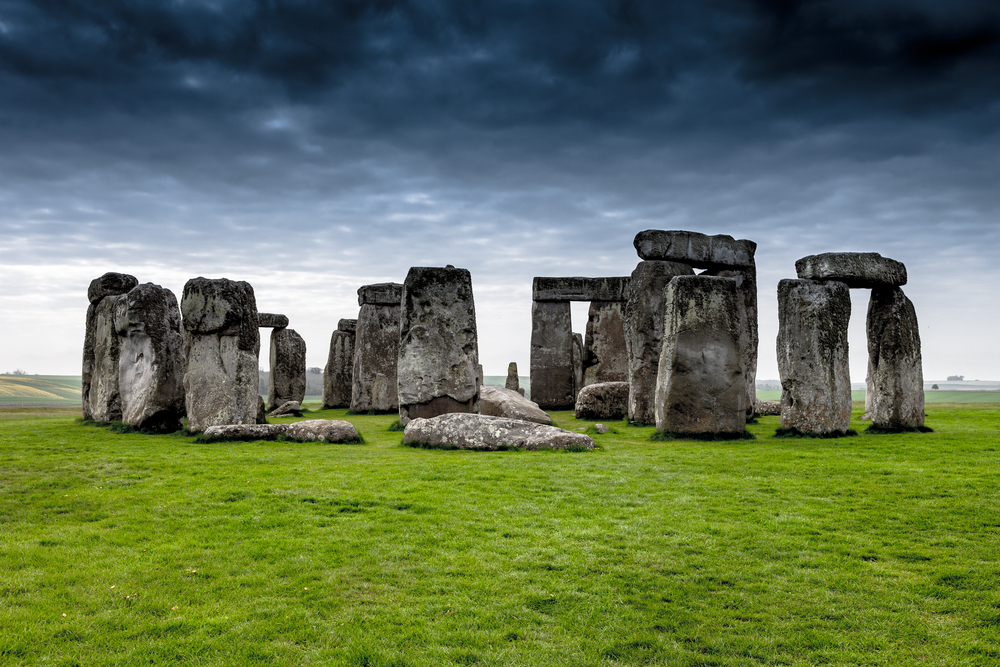
Editor's Note: This story was updated Sept. 11 at 9:55 a.m. ET
Scientists have uncovered a portion of an ancient path that may have led to Stonehenge.
While dismantling a modern road that runs near Stonehenge, the archaeologists uncovered two ditches found to be remnants of an ancient pathway called the avenue. Archaeologists have known of the avenue and suspected it led directly to the monument, but the modern road had cut the delicate pathway in two, obscuring its purpose. The new discovery confirms the avenue's role as an ancient pathway to the site.
"We found the bottoms, the truncated ditches, that belong to the feature known as the avenue, which is the processional leading up to Stonehenge," said archaeologist Heather Sebire, a property curator for English Heritage, which manages Stonehenge.
An exceptionally dry season also revealed the imprints where three stones used to lie in the main stone circle, suggesting the massive stone monument was once a complete circle. [In Photos: A Walk Through Stonehenge]
Removing a road
The purpose of Stonehenge is an enduring mystery. Some have argued it was a massive sound illusion, a symbol of unity or a monument built on a sacred hunting ground.
Sign up for the Live Science daily newsletter now
Get the world’s most fascinating discoveries delivered straight to your inbox.
For years, English Heritage had planned to remove the A344 road that snaked through the area and cut quite close to Stonehenge. Though archaeologists suspected the A344 had cut the avenue almost perpendicularly, they weren't optimistic they would find any traces of the earthwork, because the road is now recessed into the ground below the grass level.
But after workers pulled up the tarmac of the road, archaeologists noticed two parallel ditches that were almost perpendicular to the road. The ditches connected the truncated parts of the avenue. Though the banks of the pathway have long since disappeared, the ditches remained.
The discovery confirms that the avenue, which is about 98 feet (30 meters) wide, extended 0.3 miles (0.5 kilometers) straight to the stone monument before snaking onward for about 1.5 miles (2.4 km) to the Avon River in the nearby village of Amesbury.
No one knows exactly what the avenue was used for, but archaeologists have some ideas.
"We think it was a processional way; it was where people processed up into Stonehenge," Sebire told LiveScience.
Dry summer
An unusually dry summer also has revealed the presence of three dry patch marks within the stone circle where massive boulders may have once stood. Dry weather can often reveal archaeological features that have been obscured for centuries.
But those traces can be fleeting, Sebire said.
"They're quite ephemeral. It rained a few weeks ago, and it disappeared," Sebire said.
Archaeologists have yet to conduct thorough excavations but have surveyed and photographed the imprints.
The discovery bolsters the notion that Stonehenge was once a full circle; some archaeologists believe that Stonehenge was never completed.
Editors's Note: This article has been corrected to note the size of the avenue. It was 30 meters wide, not 30 centimeters wide.
Follow Tia Ghose on Twitterand Google+. Follow LiveScience @livescience, Facebook & Google+. Original article on LiveScience.

Tia is the managing editor and was previously a senior writer for Live Science. Her work has appeared in Scientific American, Wired.com and other outlets. She holds a master's degree in bioengineering from the University of Washington, a graduate certificate in science writing from UC Santa Cruz and a bachelor's degree in mechanical engineering from the University of Texas at Austin. Tia was part of a team at the Milwaukee Journal Sentinel that published the Empty Cradles series on preterm births, which won multiple awards, including the 2012 Casey Medal for Meritorious Journalism.









